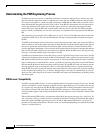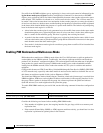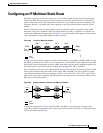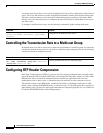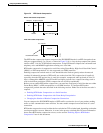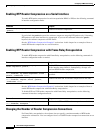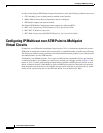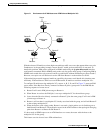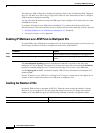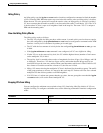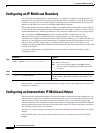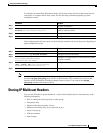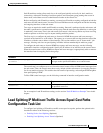
Configuring IP Multicast Routing
Configuring IP Multicast over ATM Point-to-Multipoint Virtual Circuits
IPC-434
Cisco IOS IP Configuration Guide
In order for the Express RTP Header Compression feature to work, the following conditions must exist:
• CEF switching or fast switching must be enabled on the interface.
• HDLC, PPP, or Frame Relay encapsulation must be configured.
• RTP header compression must be enabled.
The Express RTP Header Compression feature supports the following RFCs:
• RFC 1144, Compressing TCP/IP Headers for Low-Speed Serial Links
• RFC 2507, IP Header Compression
• RFC 2508, Compressing IP/UDP/RTP Headers for Low-Speed Serial Links
Configuring IP Multicast over ATM Point-to-Multipoint
Virtual Circuits
IP multicast over ATM point-to-multipoint virtual circuits (VCs) is a feature that dynamically creates
ATM point-to-multipoint switched virtual circuits (SVCs) to handle IP multicast traffic more efficiently.
The feature can enhance router performance and link utilization because packets are not replicated and
sent multiple times over the ATM interface.
Traditionally, over NBMA networks, Cisco routers would perform a pseudobroadcast to get broadcast
or multicast packets to all neighbors on a multiaccess network. For example, assume in Figure 71 that
routers A, B, C, D, and E were running the Open Shortest Path First (OSPF) protocol. Router A must
deliver to Routers D and E. When Router A sends an OSPF hello packet, the data link layer replicates
the hello packet and sends one to each neighbor (this procedure is known as pseudobroadcast), which
results in four copies being sent over the link from Router A to the multiaccess WAN.



